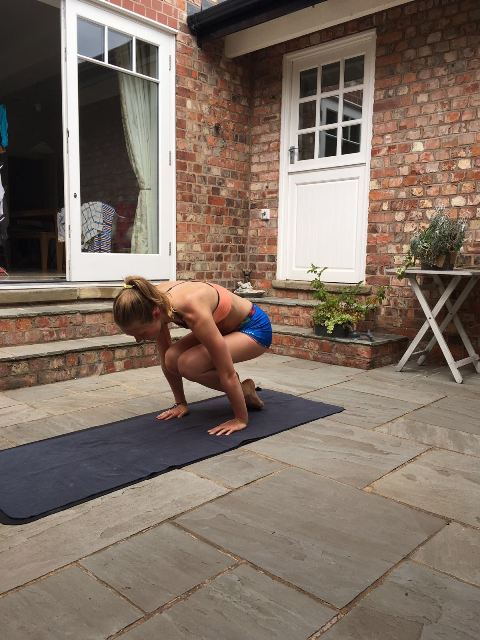![]()
Just stop it.
It’s not even a thing.
Being good at yoga suggests that our abilities can be compared to someone else living an entirely different existence in body and mind. And we all know from science experiments at school that variables have to be identical in order for data to be compared.
No two people are exactly the same, so physical and mental capabilities within the discussion of yoga should not carry comparative adjectives such as better or worse. Good to one person may be bad to another, but these labels infer that these differences actually matter. They really don’t. We all do what is our best in each moment, given all physical, mental, emotional and external variables.
Yoga is not about trying to bend in half backward like the yoga goddesses of Instagram, taking the hardest variation that our muscles and joints would really rather we didn’t.
I do have an Instagram account that I dedicate to yoga and I found this to be both inspiring and discouraging depending on my frame of mind. I find posts that preach to bring about self-doubt but I also use the images to see what else can be done with the physical body. I try to use these as things to aspire to, all the while being fully aware of my own starting point and how I can integrate a posture into my own journey.

Although social media can be a wonderful tool to make connections and open our eyes to ways we can explore with our bodies, it is important not to compare ourselves to those who we think are “good.”
It’s about going as far or as deep as we feel is available to us in each asana in each walk of life, in each moment. When we push ourselves further than that, injury and misfortune rear their ugly heads to slow our progress and dampen our spirits. Closing our eyes can be a nice way to listen to the body, stop looking around at whoever’s on the next mat, and breathe. We are all different.
There are a few types of injury we can incur in yoga, two of these being physical and mental. The chance of physical injury in yoga is minimal in comparison to other physical practises, but as with anything, they can happen if a body is pushed further than it is ready to go. Reasons for doing so can be well-intentioned, but if the desire to achieve a certain aesthetic in a pose overpowers the feeling of the body telling us something doesn’t feel right, the asana work is obsolete.
I find it most important in my own practise to apply the basics of alignment first, and then see how far I can go with those foundations intact. Here are a few things I like to keep in mind for every posture:
1. Keep the shoulders in line with the wrists in inversions to keep the synergistic function of the hands, fingers, forearms and shoulders in the way they were designed.
2. Bend from the hips without rounding the back (it’s okay if the knees are slightly bent!) to avoid microtears between the intervertebral discs.
3. Keep the knees over the ankles in deep knee bends to avoid uneven muscular contraction, which can eventually wear down the bone that the cartilage protects.
When referring to mental injury in yoga, this touches on practising for the wrong reasons. Trying to achieve Scorpion because someone else did it posed against an arty backdrop on social media is not the right reason. We practise asana because we are training our bodies to be the strongest, healthiest and cleanest they possibly can, so that we can endure long periods of meditation to achieve samadhi, or enlightenment.
World authority on Raja and Hatha yoga, Swami Vishnu-devanada’s Complete Illustrated Book of Yoga goes into great depth in explaining the eight limbs of yoga, beginning with ethical precepts, asanas and the six kriyas (cleansing techniques) before it delves into meditation. This order alone speaks for the importance of purifying the body in preparation for samadhi.
This is the traditional approach and is a great way of thinking about the connection between and reasons for the physical and spiritual practises of yoga. They are not mutually exclusive but rather one leads into another.
So in order to train our own bodies to their strongest and healthiest states, it is so important not to compare and not to judge. When we approach asana from a comparative perspective, we begin to compare physically, opening up the realms of mental self-doubt and physical injury.
Paying attention to the nuances of the body brings about the kind of mindfulness that can be tapped into during meditation.
So in conclusion, my offering is simple. Slow down, pay attention and maintain a focus that looks nowhere but inward.
Author: Femke Gow
Image: via Imgur
Editor: Catherine Monkman











Read 0 comments and reply